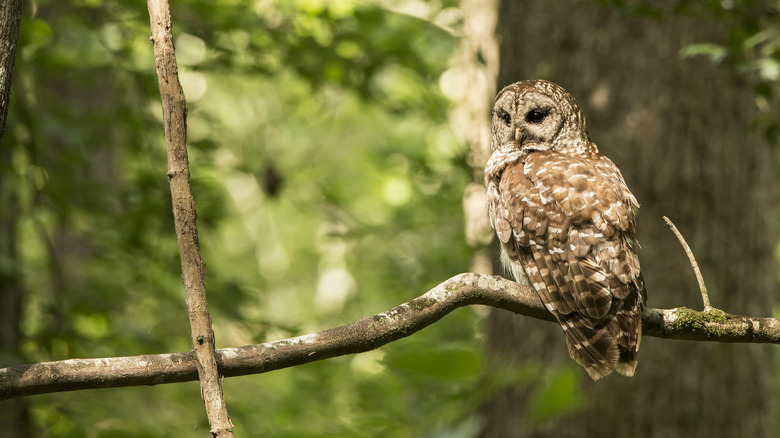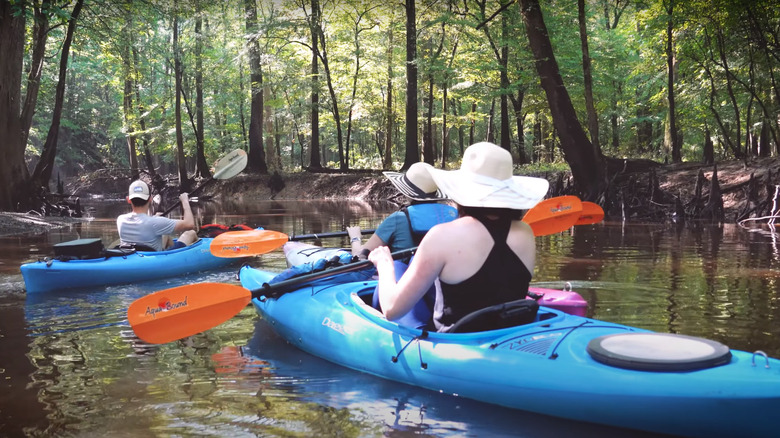When travelers find themselves longing for an inspired outdoor adventure to enjoy, the U.S. is packed with national parks to explore. According to the National Park Foundation, 63 destinations boast the official title of National Park, but some are more well-known than others. While places like Yellowstone National Park welcome more than 3 million guests annually, there are less frequented destinations on the map that promise to be just as appealing. Among them is Congaree National Park in South Carolina, which welcomed just over 200,000 visitors in 2022. No more than a 30-minute drive from Columbia, Congaree National Park provides visitors with spectacularly scenic terrain to explore, few crowds to contend with, and the unique distinction of being a place that’s best to visit in the winter when it floods.
For many, a winter trip to a national park during flood season seems counterintuitive. However, the reward of trusting this unique timeline lies in the natural beauty you’ll find and the easy access to recreation you’ll discover. With winter temperatures lingering in the mid-50s at Congaree National Park, there’s no heat or humidity to worry about and plenty of space to roam the park’s more than 20,000 acres at your own preferred pace.
Take a step back in time and savor the views

Stepping into Congaree National Park in the winter is like stepping back in time. Within the park’s parameters, visitors will encounter a beautiful protected floodplain forest hosting a collection of towering deciduous trees. This rich landscape showcases leafy canopies reaching heights of up to 100 feet in some places. The terrain is an authentic example of what the landscape here would have looked like before 19th-century logging practices.
Cypress trees are bountiful throughout the park and take on an almost mystical aesthetic during times of flooding. On average, the park floods 10 to 12 times annually which primarily occurs in the winter. This type of flooding is extremely beneficial for the nutrient-rich soil across the park, which ultimately promotes plant and tree growth and makes Congaree National Park a haven for wildlife too. Those who head this way in the wintertime with binoculars in hand are likely to set their sights on alligators, blue-headed vireos, white-throated sparrows, barred owls, red-bellied woodpeckers, and warblers.
Rising winter flood waters across Congaree National Park prove endlessly tempting for those who enjoy spending time casting a line. The waters running through the park are home to a variety of species including catfish, striped bass, and crappie. Winter anglers are welcome to fish in all areas of the park as long as they’re at least 25 feet from created structures and have a valid South Carolina fishing license in hand.
Exploring the watery terrain

Alexyn Photo & Video/YouTube
One of the very best routes to relishing the flooded views during the wintertime is from a raised vantage point. To that end, Congaree National Park is home to a 2.6-mile boardwalk that’s strategically elevated over the floodplain. This means that winter visitors won’t ever have any trouble enjoying the vistas and keeping their eyes peeled for river otters along the way.
There are also options to enjoy the flooded winter landscape at the park from the comfort of a kayak or canoe. Many visitors set their sights on the Cedar Creek Canoe Trail which spans 15 miles and provides scenic sightseeing options between Bannister’s Bridge and the Congaree River. Local outfitters like River Runner Outdoor Center based out of Columbia are more than happy to help visitors organize rental canoe and kayak drop-offs right at the water trail. The team at Palmetto Outdoor offers guided canoe tours alongside local experts that last around three hours and provide an in-depth look at the Congaree swamp system.
No matter how you plan to explore Congaree National Park during winter floods, water safety should always be a priority. Typically, water levels reach anywhere from eight to 12 feet, but there have been instances when levels have surpassed these numbers creating rushing rapids. If you aren’t experienced in a kayak or canoe, it’s always best to partner up with an outdoor recreational outfitter in the name of safety.

